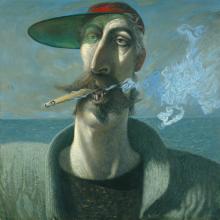
REVIEWED BY RHYS FULLERTON
‘I think each one of us has to get through these years of trial, without hope, and without despair.’ René Magritte in letter to John Byrne.
In 1967, John Byrne was working in a carpet factory, unable to make a living from painting. He wrote a letter of admiration to Belgian surrealist artist René Magritte.
That letter – addressed to ‘Magritte, Brussels’ – remarkably made it to the artist who would reply not with the answer to success but with solidarity and respect for the then struggling artist Byrne. The letter is tucked away in the corner of this exhibition at the Scottish National Portrait Gallery and it tells us more about John Byrne than some of his self-portraits do. Extracts from it are interspersed throughout this review.
There are two sides to John Byrne’s work. There are the larger-than-life whimsical portraits and there are the ones which dig beneath the surface of the subject and show the complexities of character underneath. The two don’t always work hand in hand, which I found sometimes distracting. It’s clear that the serious paintings are more artistic and better crafted, but it seems like Byrne has more fun when he paints the other way.
In the late 1960s Byrne submitted a series of paintings under the name ‘Patrick’, a retired labourer who painted for a hobby. In the gallery notes for Patrick's 'The American Boy' (1971), Byrne says that these works look very different in subject matter and execution to later ones. For me, though, I can see Patrick’s style appearing again and again in some of his works on show here. They are more subtle and skilled than the early ‘Patrick’ works but they still present the surface person rather than getting deeper.
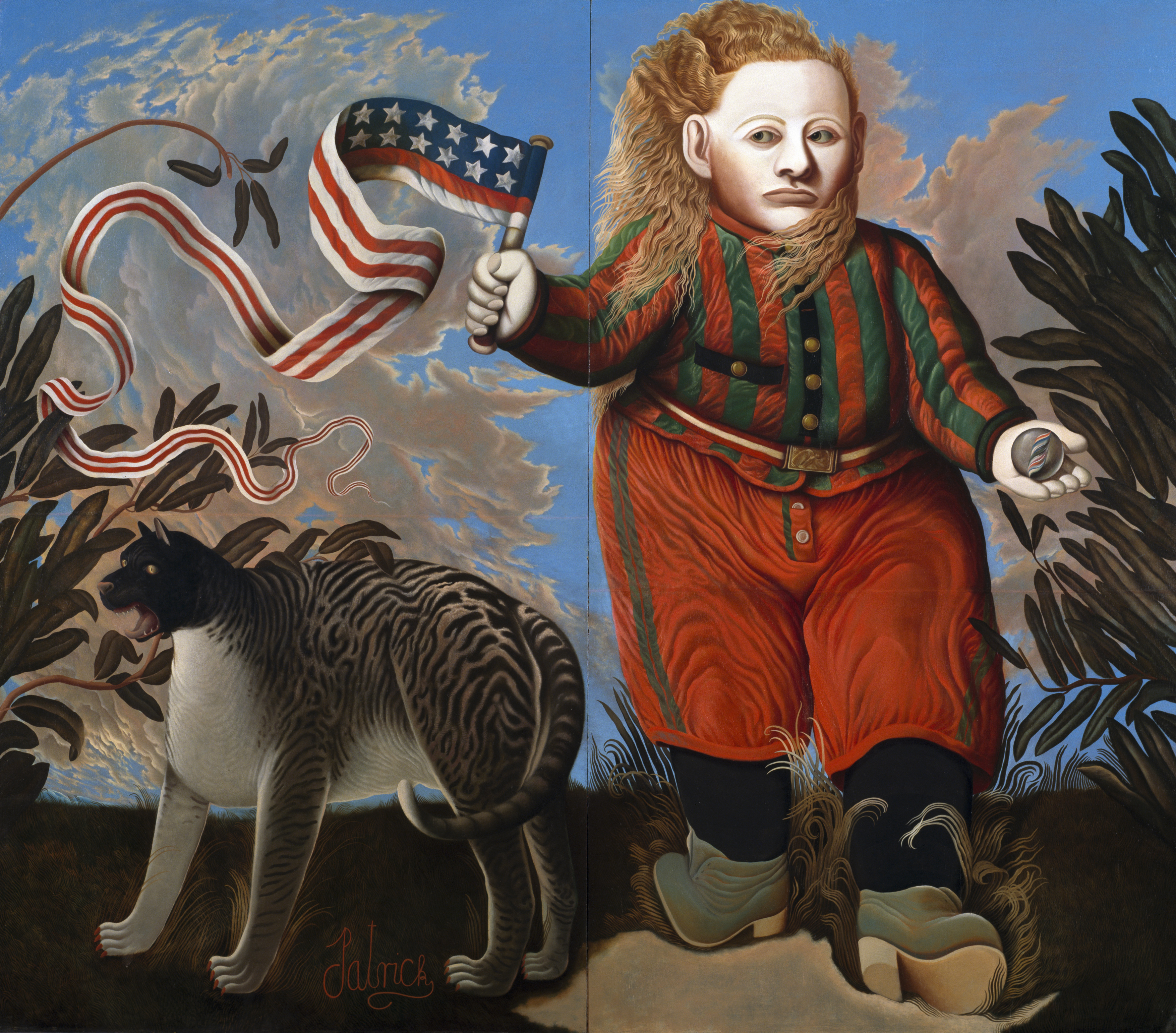
'Self-Portrait with Red Palette' (1974–75) is one of the earlier more meaningful self-portraits. The work is made up of two panels stuck together. On one of them stands Byrne holding a red palette, on the other is a continuation of the room with only a black palette lying on the floor. The line between them divides the room quite heavily but very effectively. The two panels that make up the work seem to be more than just a way of painting on a large canvas. Does Byrne see two sides to his own work?
‘The issue is the mystery in my painting and that is the reason why I continue to paint.’
The two styles are clearly visible in two of the portraits of Tilda Swinton. 'Read and Unread' (2002/2004) is another exaggerated creation. We see the actress Swinton portraying a character – it’s a skilled painting but doesn’t show us anything new.
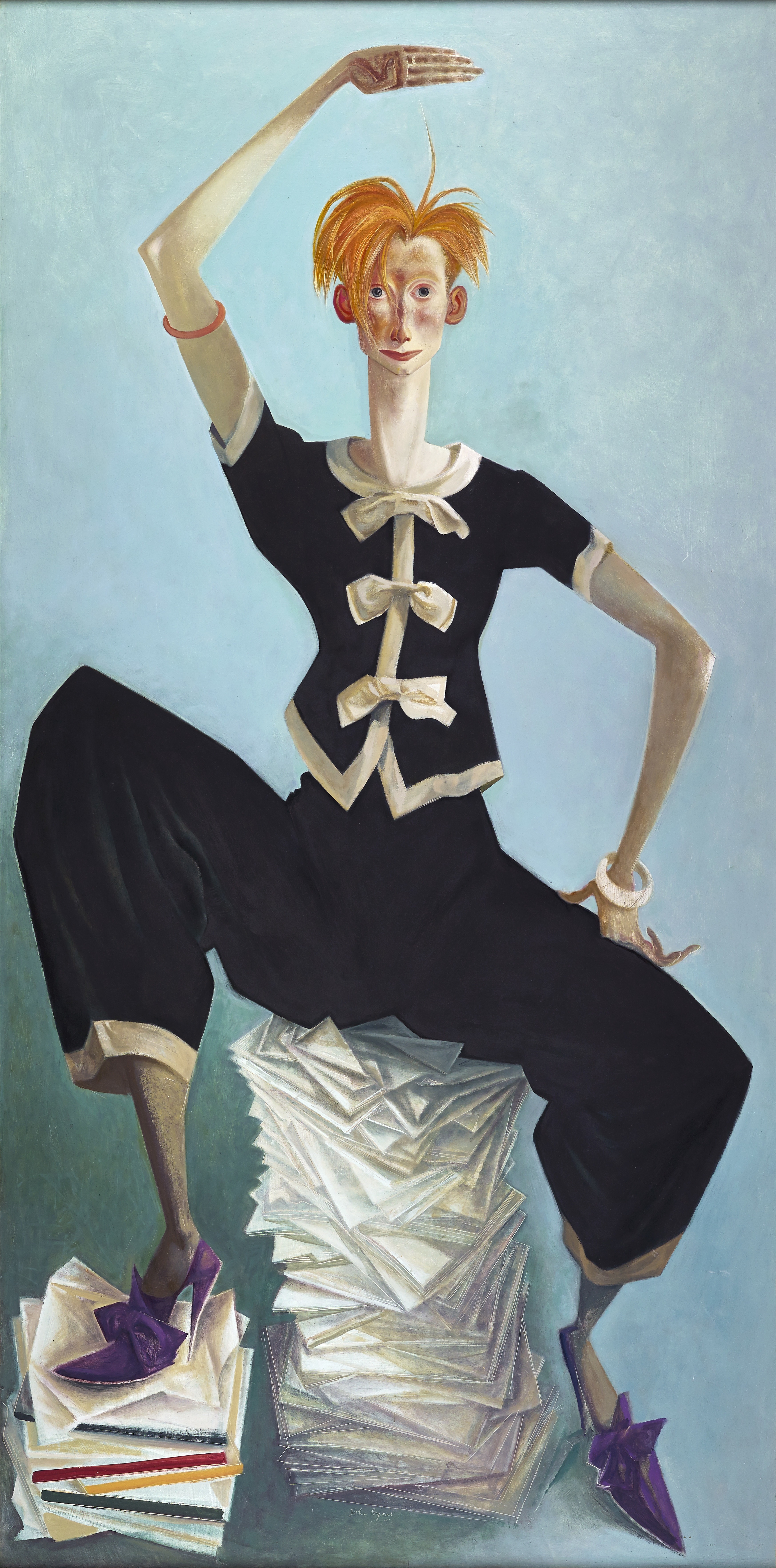
Opposite this painting is ‘Tilda Swinton, actress’ (2002), which is one of the highlights of the exhibition. The horizontal brush strokes carve out the portrait like a knife, and this – combined with the framing of the subject – show her loneliness and vulnerability, creating a very powerful effect. Unfortunately, no image of the work is available for reproduction here. Instead, pictured below is another study: 'Tilda Swinton, b. 1960' (2001).
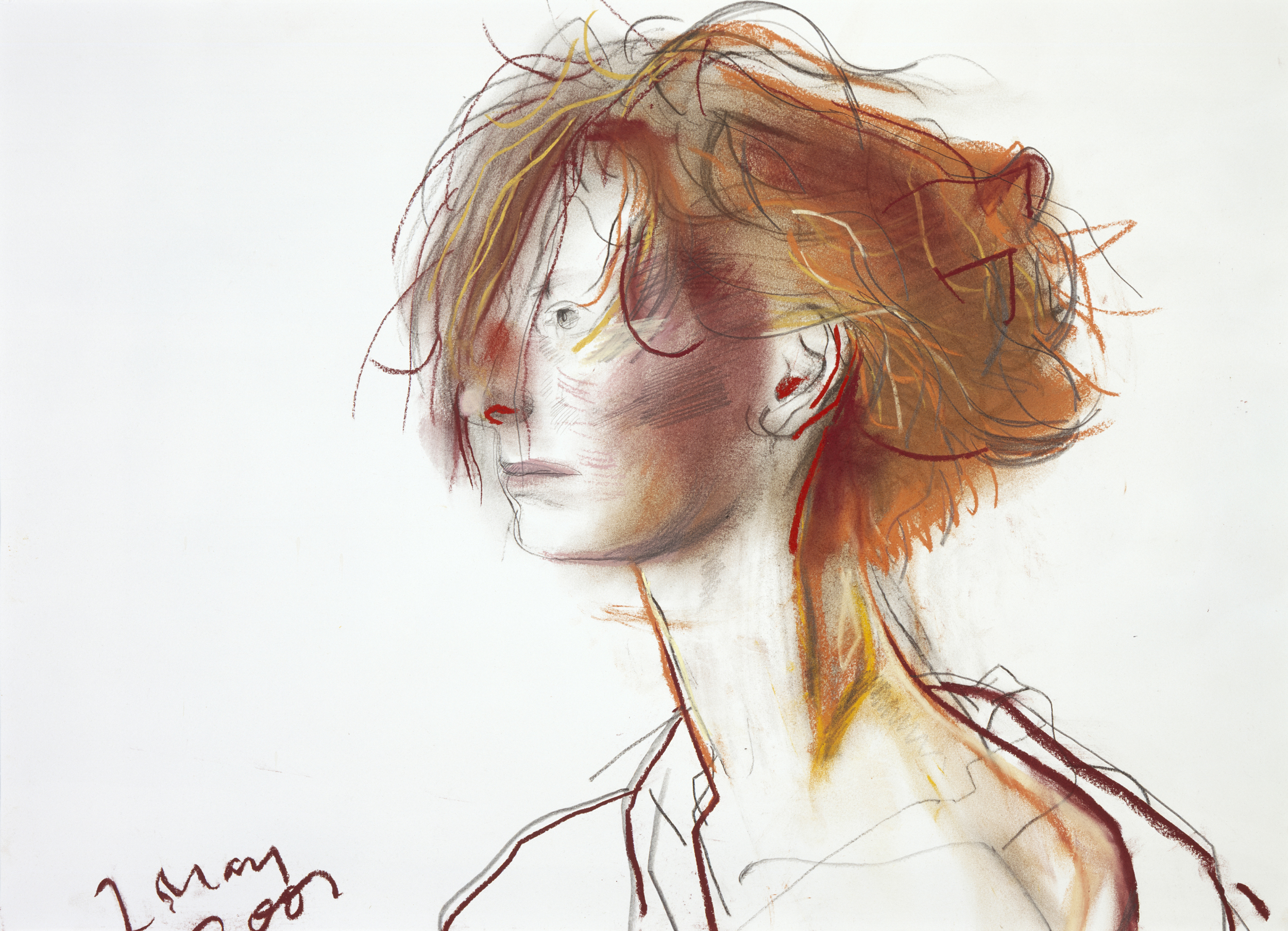
Also worth a mention is 'Jeanine' (2010), which again shows Byrne's skill in framing his subjects. It also has an oddly shaped canvas, which works in unison with the painting and the colours to create a daring portrayal of someone close to the artist's heart.
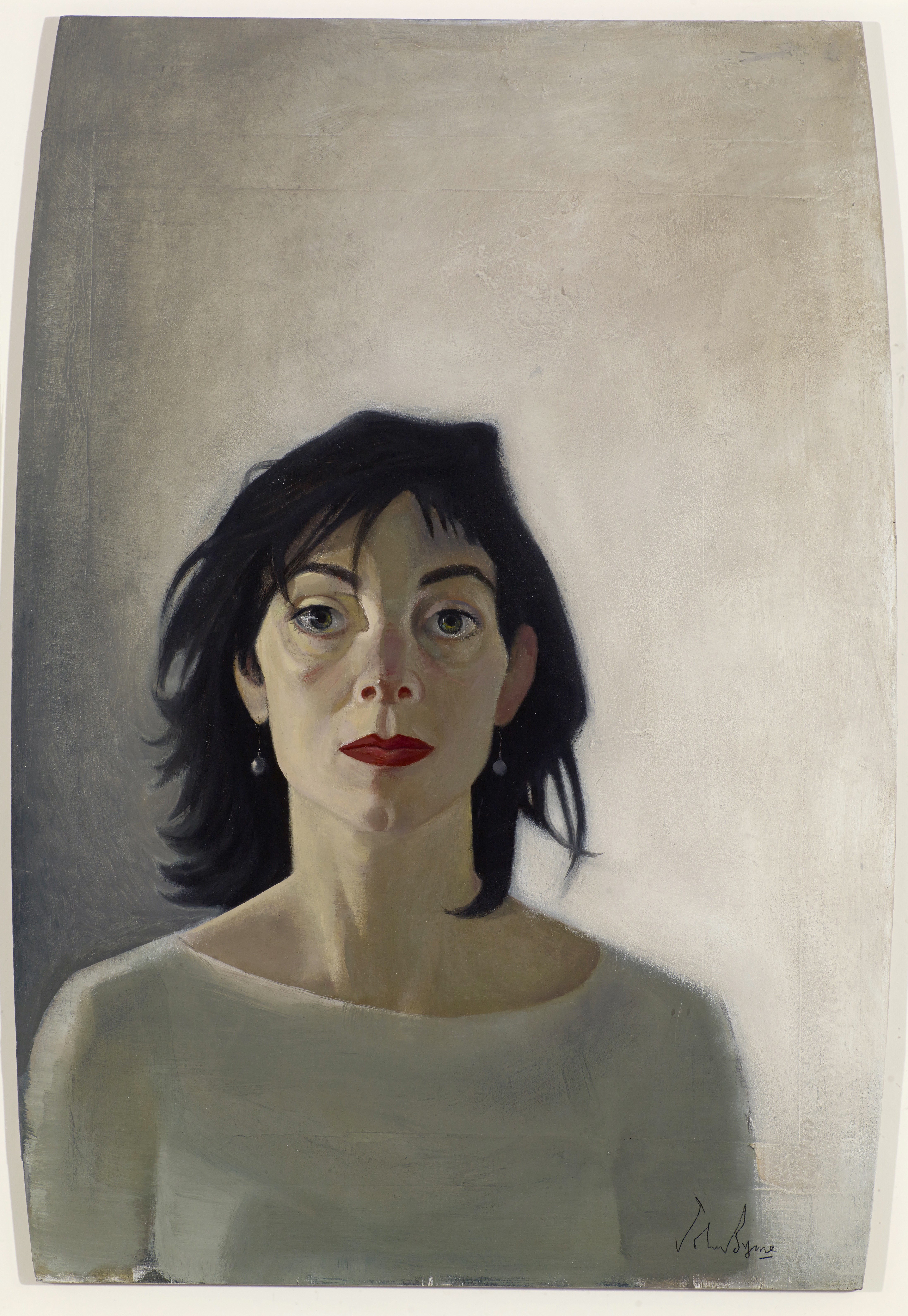
Two more exquisite paintings show Byrne at his best. ‘Joie de Vivre (the artist’s children Honor & Xavier)’ (2005) sees his subjects distorted, the dull colours create the illusion of them almost trying to sink into the background. ‘Self Portrait on white’ (2012) is clearly his best self-portrait and the most recent. It shows a tired but fulfilled Byrne. It’s as if the artists has finally accepted his style and has found fulfilment in his art as his idol René Magritte once did.
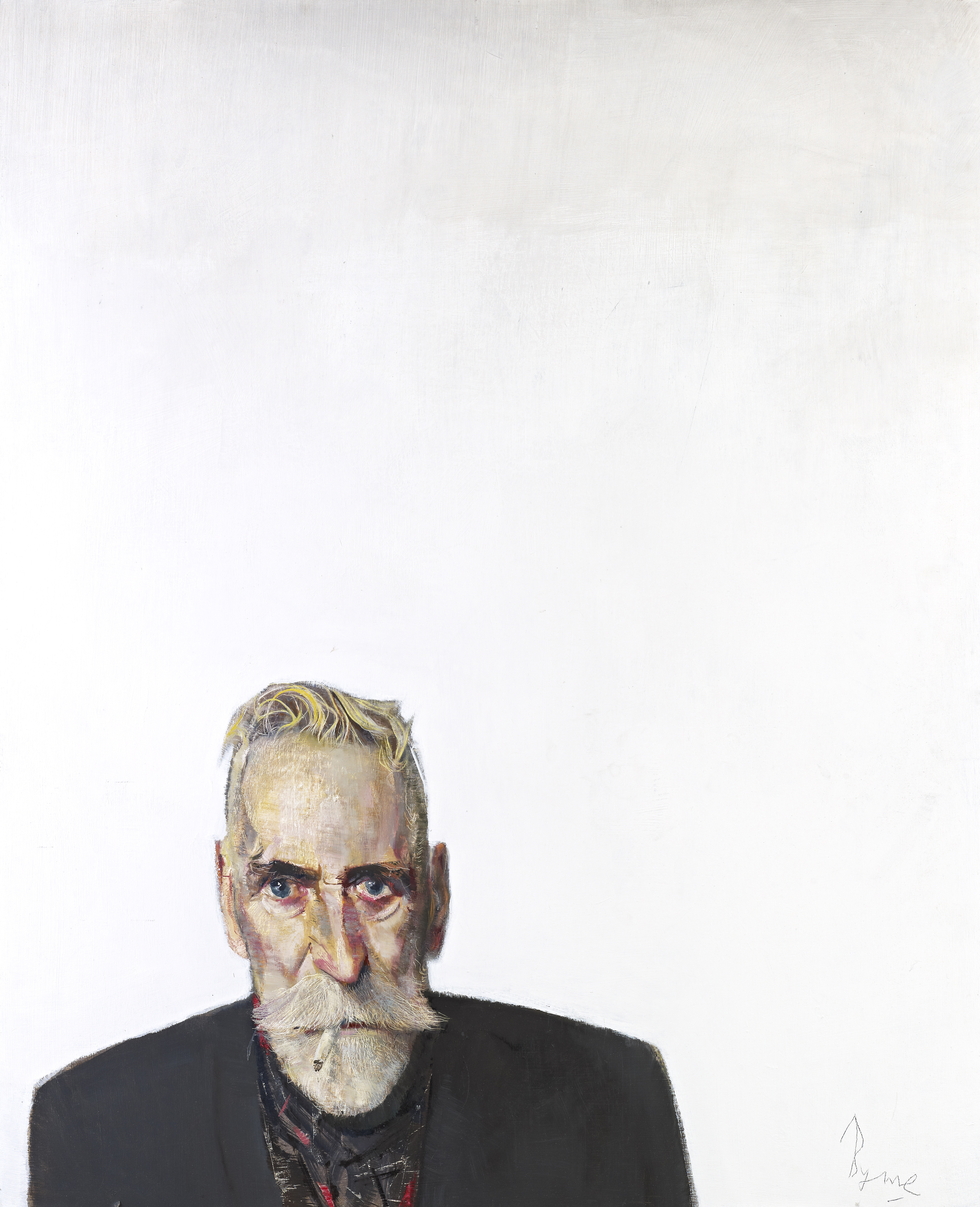
On my visit to the gallery, you couldn’t help but overhear other visitors tell stories and anecdotes of John Byrne – how they once met him or spotted him or knew something about him. Byrne seems to have that effect on people, but it is quite clear that there is more beneath the surface of Byrne than meets the public’s eye. However serious his art gets, there’s always fun to be had.
‘I do not know what the reason is for living or dying (if there is a reason for living or dying in the mysterious universe).’
John Byrne: Sitting Ducks continues at the Scottish National Portrait Gallery (1 Queen Street) until 19 October. Admission free.
*****
Image credits from top to bottom:
Self-portrait with Yellow Cigarette, Oil on board, Size 76.3 x 76.4 cm, Manchester City Art Gallery, © John Byrne / Bridgeman images
The American Boy, 1971, Oil on board, Size 21 x 24 cm, Glasgow Life (Glasgow Museums) on behalf of Glasgow City Council, © John Byrne / Bridgeman images
Read & Unread, 2002/2004, Oil on board, Size 244 x 121.92 cm, Open Eye Gallery, Edinburgh, © John Byrne / Bridgeman images
Tilda Swinton, b. 1960, 2001, Pastel on paper, Size 48.70 x 68.60 cm, Scottish National Portrait Gallery,
Jeanine, Oil on canvas, Size 61 x 45 cm, Collection of KM Swinton, Nairn, © John Byrne / Bridgeman images